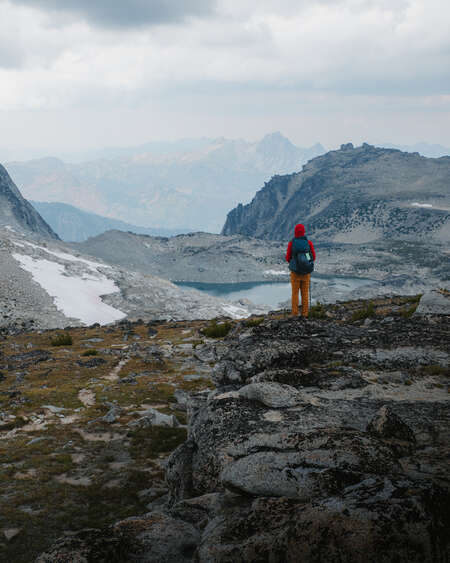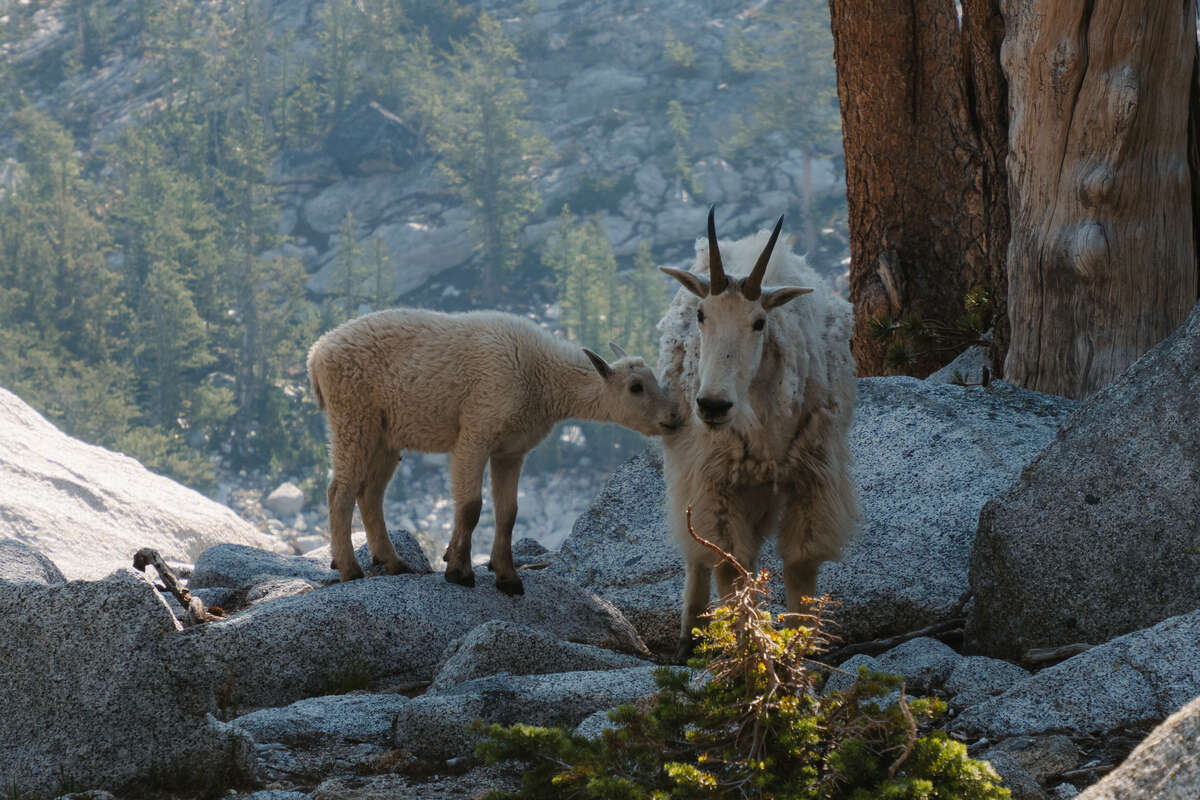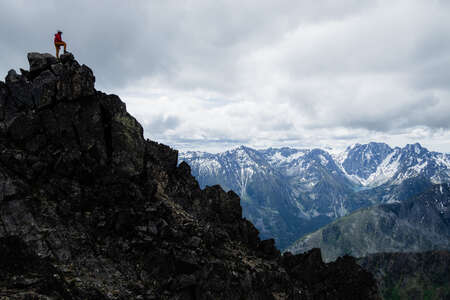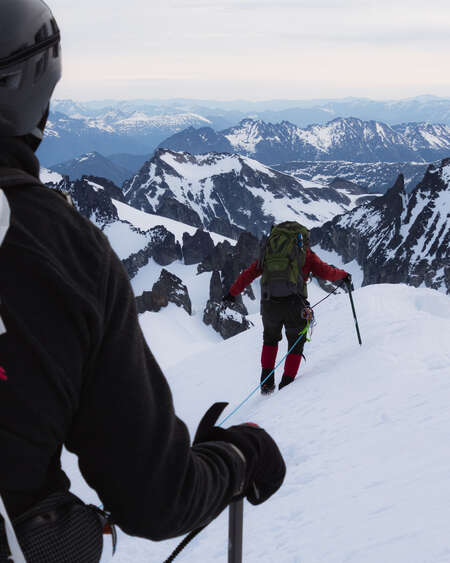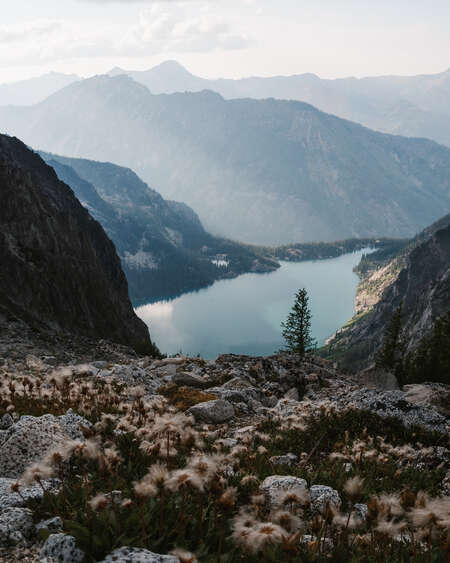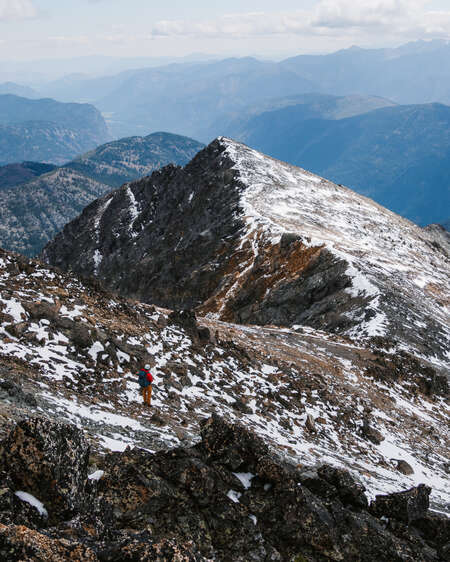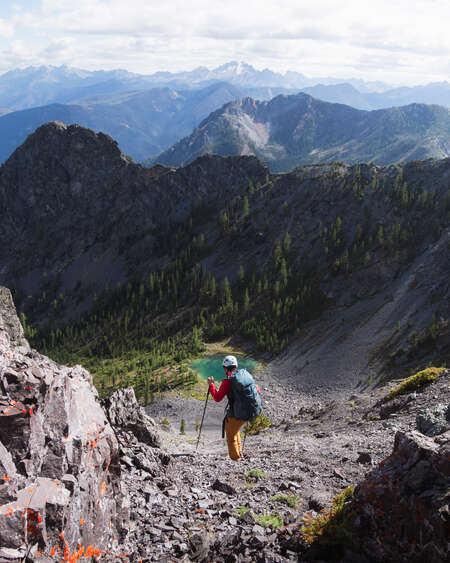Ever since I learned how to mountaineer, I started a very personal project, named 30 by 30, to summit 30 Bulgers (Bulgers = 100 tallest peaks in Washington) over the span of 3 seasons before turning 30 years old. During the descent of my 20th peak, I was unfortunately injured. In a deadly predicament, I confronted fear head-on, miraculously turning myself around without any protection after falling off an icy slope at full speed. Since then, I fell into a 4 month long journey to recovery. When I was frustrated and lost in questioning what the future lies ahead for me, I stumbled upon the Tell Your Story application and decided that I wanted to give myself a chance. I wanted to convey a message of resilience, that life is beautiful and worth celebrating regardless of the course it takes.
For this project, I had initially set my eyes on the following peaks as the final 10 to finish my goal. They each include aspects of the classic alpine Cascades mountains: glaciers, snowfields, scree slopes, rock faces and steep cliffs. They were Emerald Peak, Saska Peak, Pinnacle Mountain, Little Tahoma, Cashmere Mountain, Glacier Peak, Mount Shuksan, Eldorado Peak, Silver Star Mountain, and Mount Adams.
This project started in late May with a summit attempt to Emerald Peak, Saska Peak, Pinnacle Mountain, and it unfortunately was not a success. We had to forgo Pinnacle Mountain due to time constraints after encountering early season conditions that significantly slowed us down. We were close to the summit of Emerald Peak and Saska Peak but gave up approximately 30 feet away from the summit due to unsafe (to us) conditions on the summit block. We did not feel comfortable with the wet rock and steep snow/ice without additional protection. This would not be the only trip in which we had to change plans; countless others had to be canceled due to unpredictable Pacific Northwest weather conditions in June. After taking a month off in July, the project resumed in August with peak-bagging trips on back to back weekends. The final tally included Eldorado Peak, Silver Star Mountain, Cashmere Mountain, Fortress Mountain, Enchantment Peaks, Little Annapurna, Robinson Mountain, Osceola Peak, Mount Carru, and finally, Mount Lago. As the plan ebbed and flowed with uncontrollable changes, it eventually led me to finishing the project and coming out of it unscathed well ahead of schedule - 36 days before my birthday. It was a privilege to walk away with three main lessons that the mountains taught me throughout the journey:
Allow curiosity to guide you
Curiosity invited me to explore unfamiliar terrain, to dig deeper into ideas and find different ways of solving a puzzle, and to seek out new experiences when trying to conquer a mountain peak. By allowing curiosity to be my compass, it has motivated me to challenge assumptions, to step outside of my comfort zones, and to find unexpected paths. By letting curiosity guide me, I have also become more present and engaged in the world around us. The sound of wind, the smell of rain, and the movement on rock are unexpected challenges that often come my way, and curiosity allowed me to ask questions like “What can I learn from this?” or “How can I navigate this creatively?” It shifts the focus from rigid outcomes to the richness of the process, where exploration becomes more valuable than the destination. In this mindset, mistakes or detours are not setbacks but part of the discovery process.
Curiosity has also inspired me to learn new mountaineering techniques and continue expanding my knowledge about gear, weather patterns, and navigation. Instead of just focusing on reaching the summit, I often dive into the details of how to improve my climbing abilities. There are always new aspects of myself and the environment to be discovered after each climb. This reflection deepens my connection to mountaineering and keeps me excited for future adventures. Curiosity encourages us to approach life with openness and a sense of wonder, leading with questions rather than certainty.
Redefine success
Success can be as much about who we are becoming in the process as it is about the goals we achieve. It is about making the tough but right decision to prioritize safety over ambition, preserving my ability to return for another climb. It means pushing my physical and mental limits, overcoming fear, and learning to trust my instincts. This was evident from my trip back to the mountains after my injury. I was not able to achieve any of my 3 objectives that weekend. However, understanding and respecting the risks of the mountain environment show wisdom, strength and progress. I have never pursued any mountaineering objective solo, and success in this case means fostering teamwork and building stronger bonds with my climbing partners. Supporting each other, communicating effectively, and creating lasting memories with my team can be as rewarding as reaching the summit itself. When we redefine success, it invites us to break free from traditional, societal definitions of achievement and create a more personal and meaningful understanding of what success looks like. This redefinition empowers us to embrace non-linear paths, failures, and shifts in direction as valuable parts of the experience. Ultimately, when we take control of how we define success, we gain the freedom to pursue a life that feels authentic, rewarding, and aligned with our unique purpose, rather than chasing someone else's vision of success.
Surrender the outcome
The biggest lesson I’ve learned, and will continue to learn, is to let go of the need to control every result, trusting that things will unfold as they are meant to. When I was undergoing my 4-month long recovery, instead of getting caught up in fear of losing the entire mountaineering season and potentially not meeting my 30 by 30 goal, I chose to refocus on my effort, intentions, and presence in the moment of the recovery journey. I became more aware and conscious of how my body moved, listened to its needs, honored its limits, and nourished it through mindful movement, rest, and nutrition. My physical therapist even asked me if I would update my goal to 31 by 31! While we can set goals, make plans, and put in our best efforts, not all final results are often controlled within our hands. Letting go of attachment to specific results teaches us resilience, patience, and trust in the journey itself. It reminds us that growth happens not just when we achieve a goal, but in the process of getting there, even when the outcome is uncertain or different from what we anticipated. Accepting uncertainty is part of the experience. It’s about being adaptable and responsive to conditions rather than rigidly sticking to a predefined plan. Mountains have their own rules, and as climbers, we are always acting at the mercy of nature. Respect that the mountain may not grant me passage on a given day, no matter how prepared I am. By surrendering to the mountain’s conditions, I show humility and reverence for the power of the natural world. Instead of fighting what is out of my control, I let go, and find peace in the fact that I have done my best under the circumstances. “Surrender the outcome” allows me to become a stronger, more resilient mountaineer. I don’t think I can imagine a life away from the mountains; it taught me about humility, survival, and most importantly, resilience.The mountains have a way of stripping away distractions, forcing me to confront my limits while revealing a deeper strength within. Each climb has reminded me that true growth comes not from conquering the peaks, but from enduring the challenges along the way - whether it’s battling harsh conditions or navigating the unpredictable terrain of life. The lessons learned in the mountains stay with me, reminding me to stay grounded, adaptable, and always moving forward, no matter the obstacles.

